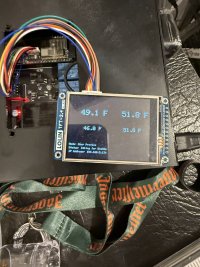Thanks! This is a really fun project to work on - especially as I find new things to try to integrate it with. I’m looking forward to getting v16 finished up so I can focus on finishing FT2 gravity support so I can come back and work on building official glycol support now that I (as of last week) finally have a (working, leak-free) glycol chiller. Lots of fun stuff to come!@Thorrak , all of your hard work for us Brewers, is really appreciated, even if you do not hear this every day.
Your Fermentrack have been working in my Brewery, along with Tiltbridge, for years now, with great success!
Thanks a Million Toasts!
@Thorrak
With all of your "free time", is it easy for us non-programmers, to edit our Dashboard from saying "Beer Profile" to Wine or Meade, Profile ? Also applies to Wine Constant.... etc.
No biggy, just mentally strange using Fermentrack on a Wine, that says "Beer ......"
Edit.....
Sorry, wrong Forum here. Can not figure out how to "Edit" and delete this post here.
Do you mean for Fermentrack, or the on-device dashboard?
If Fermentrack, maybe - but you would need to be at least slightly familiar with Docker (and would absolutely want to back up everything first).
I’m on my phone so I can’t confirm, but I think this is the file you would want to edit.
To edit it, however, you would need to download the source from GitHub, edit the file, and then build the docker image yourself. Once done, if you edit the docker compose file in your fermentrack tools directory to point to the image you built you should be golden.
One thing to note - It has been a year since I last built Fermentrack, so you also need to be aware that things may have broken in the interim that would need to be rebuilt to get it to build properly. Hopefully not, but that pandora’s box is part of why I switched to using docker in the first place. (that said, if you get to this point, I’m happy to help with this part.)
If what you want to change is the dashboard on the device, that is a very different process/set of tools, but I’m guessing that is not what you meant. If that is what you meant, wait until I have the v16 beta out and the change will be much more straightforward.





















![Craft A Brew - Safale S-04 Dry Yeast - Fermentis - English Ale Dry Yeast - For English and American Ales and Hard Apple Ciders - Ingredients for Home Brewing - Beer Making Supplies - [1 Pack]](https://m.media-amazon.com/images/I/41fVGNh6JfL._SL500_.jpg)





























